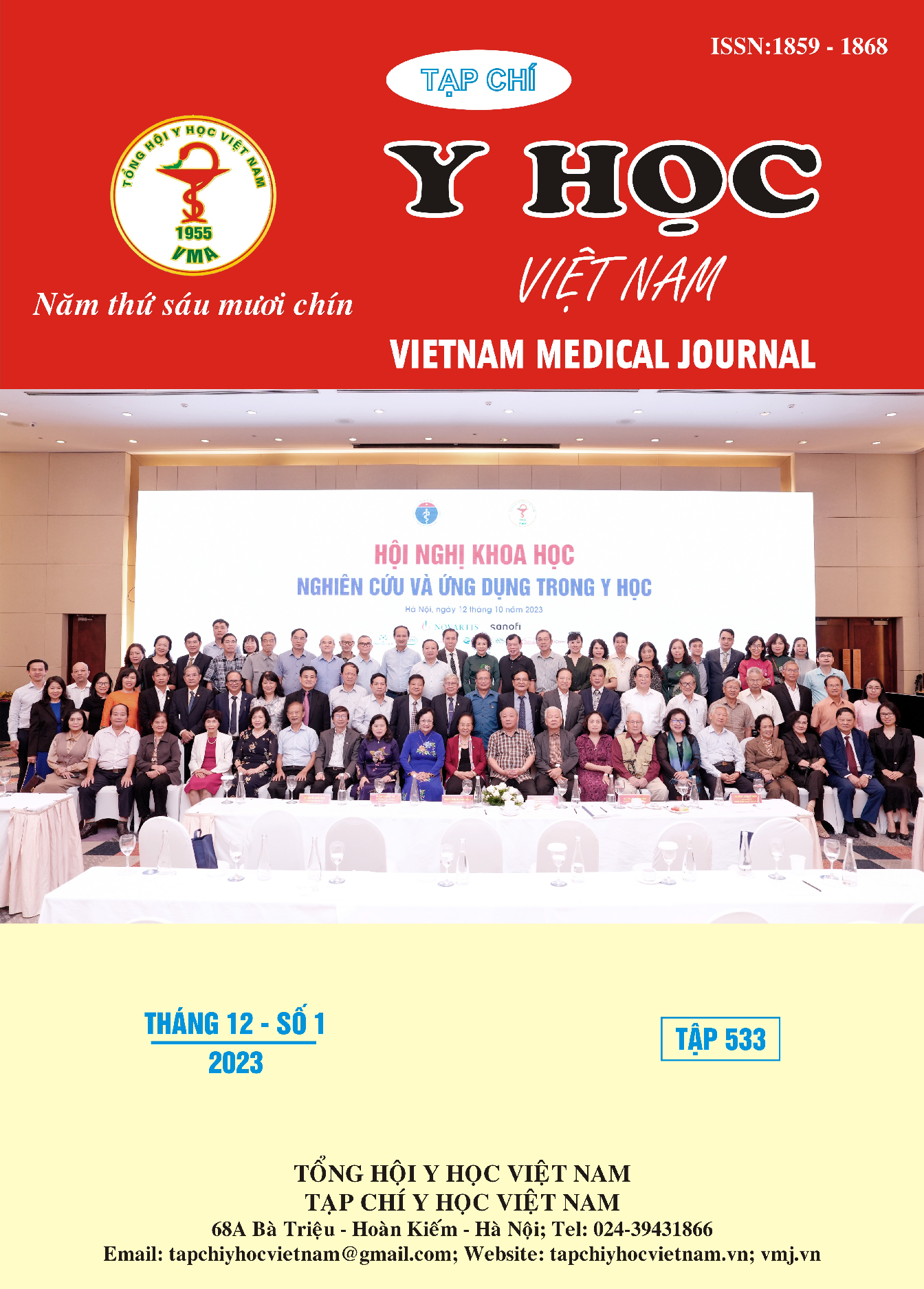RESPIRATORY SYMPTOMS AND FRACTIONAL EXHALED NITRIC OXIDE IN SIXTH-SEVENTH GRADE CHILDREN IN HO CHI MINH CITY EXPOSED TO AIR POLLUTION
Main Article Content
Abstract
Air pollution has been demonstrated to be associated with various health issues and mortality worldwide, including significant short-term and long-term risks to respiratory health, especially concerning for children. The aim of this study was to assess the impact of air pollution on respiratory health by investigating respiratory symptoms and respiratory inflammation indicated by fractional exhaled nitric oxide (FeNO) levels. This cross-sectional descriptive study involved 170 grade 6-7 children from two secondary schools in two districts of Ho Chi Minh City (HCMC), from December 2022 to January 2023. The results showed that out of the 170 participating children, the most common complaints were sneezing/nasal congestion and runny nose (85,9%), followed by coughing (34,7%). In the past three months, 65,5% of the children experienced sneezing/nasal congestion and runny nose, and 39% had coughing. The average PM2.5 concentration over the three months, measured both outside and inside the school, was 47,8 and 39,4 (ppm) respectively, both higher than the WHO standard of 25 ppm. The average FeNO level recorded was 7,9 ± 8,7 ppb, with 8% of the children having FeNO levels categorized as medium-high. FeNO levels were significantly higher in the group of children with a history of asthma compared to those without asthma (p=0,04). No significant correlations were found between FeNO levels and gender, place of residence, smoking, respiratory symptoms, and PM2.5 concentration. Therefore, the impact of air quality on respiratory health needs to be addressed, and measures to reduce the impact of pulmonary exposure to pollutants in children should be implemented.
Article Details
Keywords
respiratory symptoms; FeNO; air pollution; children.
References
2. Dockery DW LP, Etzel RA. Outdoor Air pollution in Textbook of Children’s environmental health. 1st ed ed. Oxford University press; 2014.
3. J B, C CA, D B, et al. Investigating the relationship between environmental factors and respiratory health outcomes in school children using the forced oscillation technique. International journal of hygiene and environmental health. 2017;220(2):494-502.
4. MT LL, Dung P, D SP, Lidia M, K TP. The association between particulate air pollution and respiratory admissions among young children in Hanoi, Vietnam. Science of the Total Environment. 2017;578:249-255.
5. Sly P D, A B. From the cradle to the grave: the early-life origins of chronic obstructive pulmonary disease. American Thoracic Society; 2016.
6. K LC, R B, J C, S F, J S, S W. Global variation in the prevalence and severity of asthma symptoms: phase three of the International Study of Asthma and Allergies in Childhood (ISAAC). Thorax. Jun 2009;64(6):476-83. doi:10.1136/thx.2008.106609
7. ATS/ERS recommendations for standardized procedures for the online and offline measurement of exhaled lower respiratory nitric oxide and nasal nitric oxide, 2005. Am J Respir Crit Care Med. Apr 15 2005; 171(8):912-30. doi:10.1164/rccm.200406-710ST
8. Le HHTC, Le An P, Vinh NN, et al. Burden of asthma-like symptoms and a lack of recognition of asthma in Vietnamese children. Journal of Asthma. 2023/03/04 2023;60(3):516-524. doi:10.1080/02770903.2022.2066002
9. García-Almaraz R, Reyes-Noriega N, Del-Río-Navarro BE, et al. Prevalence and risk factors associated with allergic rhinitis in Mexican school children: Global Asthma Network Phase I. World Allergy Organ J. Jan 2021;14(1):100492. doi:10.1016/j.waojou.2020.100492
10. Huang W, Wang G, Lu S-E, et al. Inflammatory and oxidative stress responses of healthy young adults to changes in air quality during the Beijing Olympics. American journal of respiratory and critical care medicine. 2012/12// 2012;186 (11): 1150-1159. doi:10.1164/rccm.201205-0850oc


